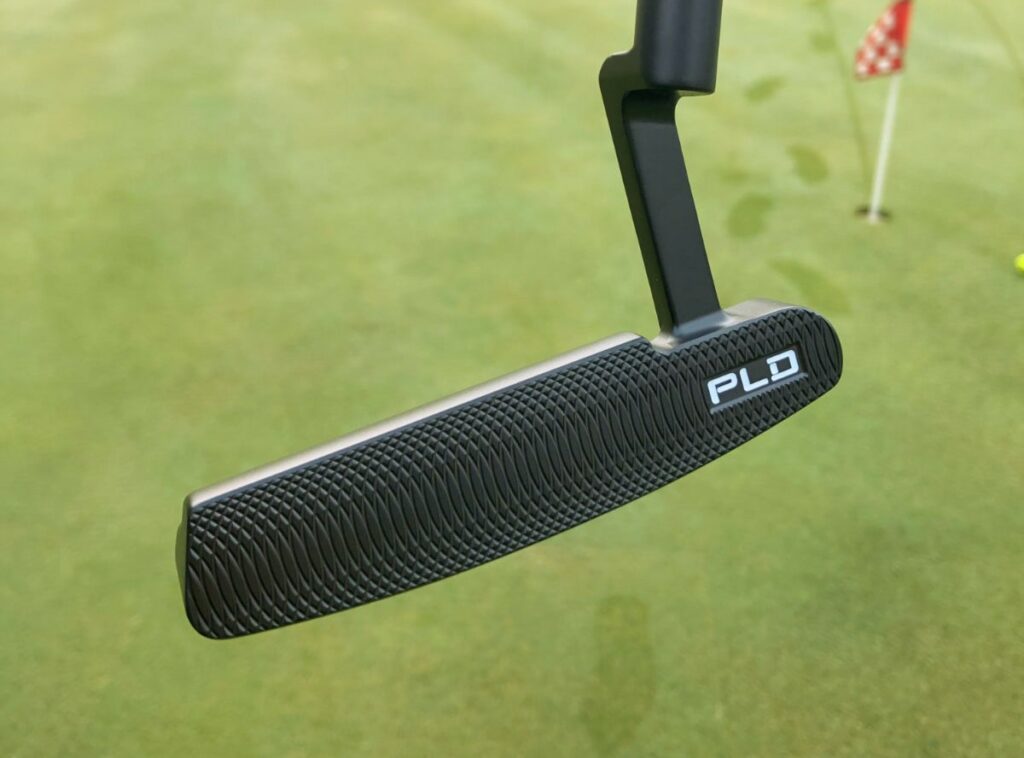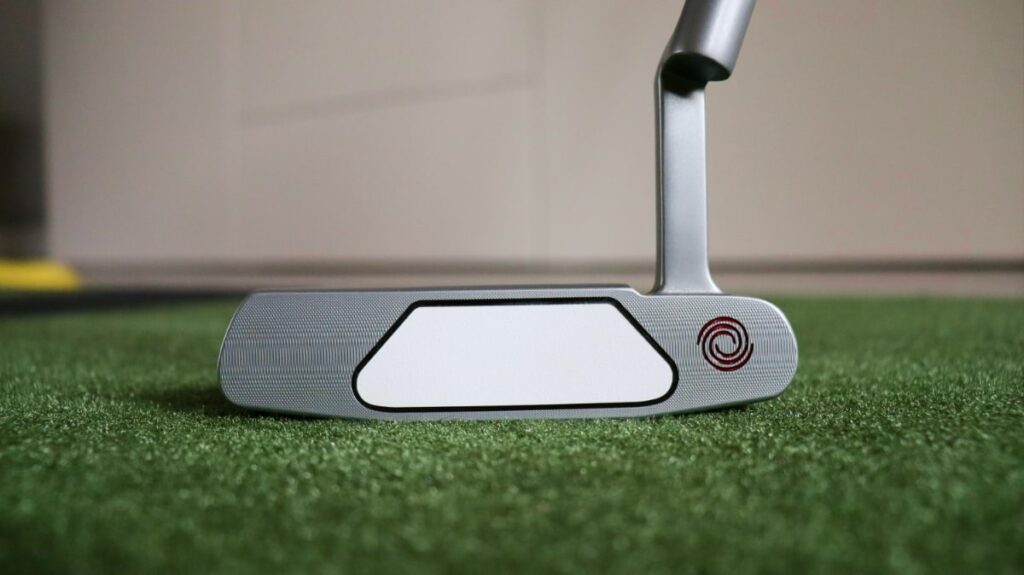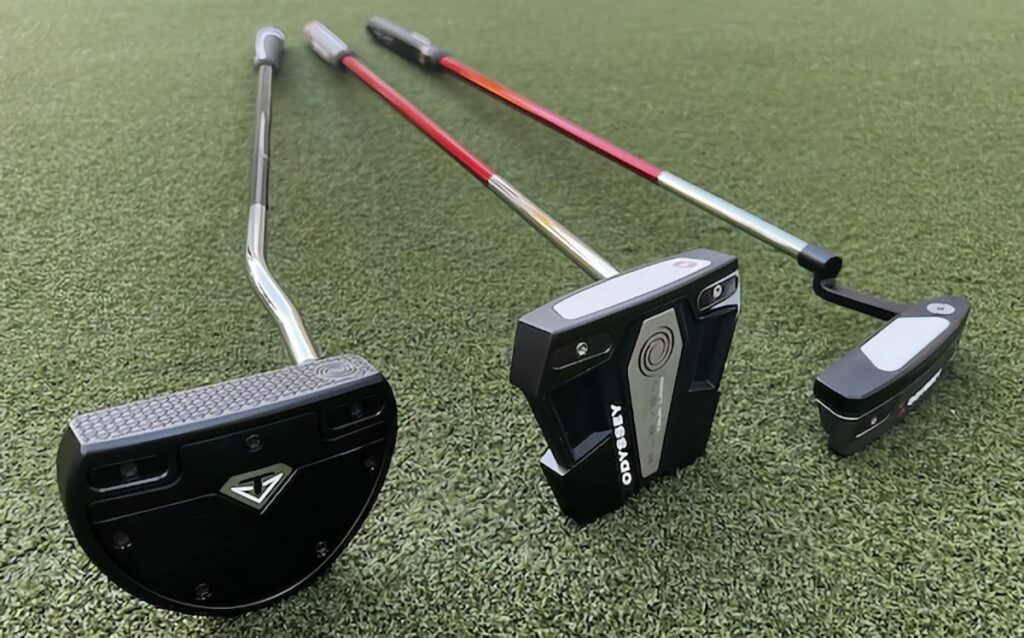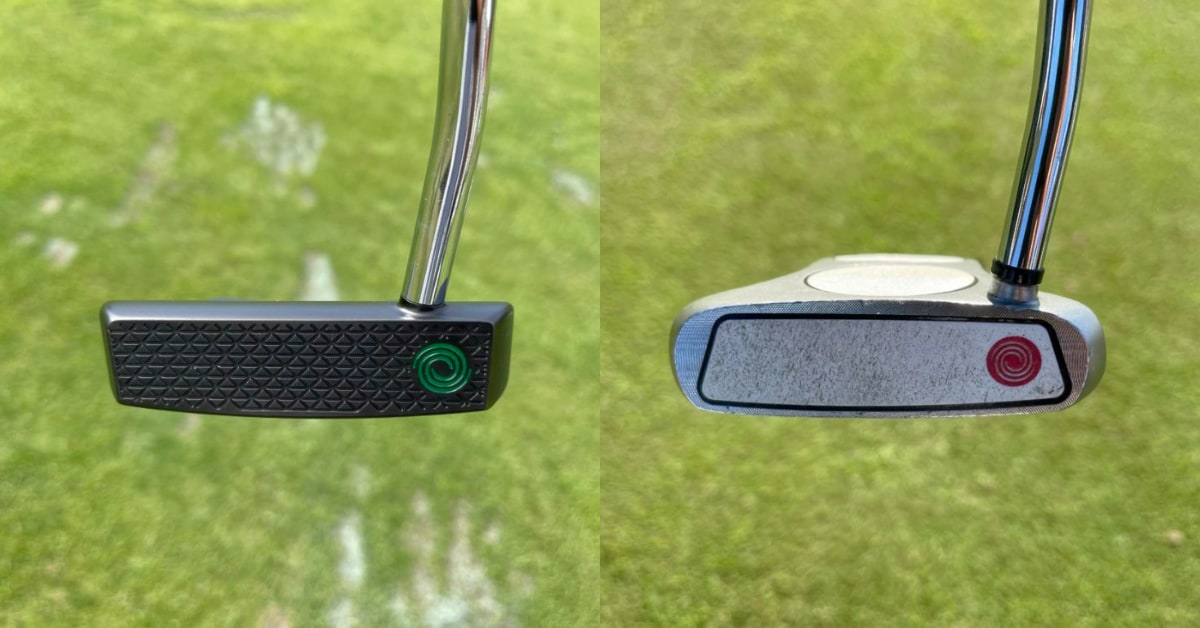Want to get into a heated debate with a real putting enthusiast?
Bring up the topic of milled vs insert putters.
Jokes aside, both have their qualities! Those who believe in milled putter technology feel quite strongly about it, while others prefer the soft feel of a polymer face insert.
Having played both milled and insert putters, I can give you an idea about which one is best for your game — along with the key differences between them.
Let’s get straight into it!
Milled vs Insert Putters
Milled putters have a head that’s formed from a single piece of metal. Conversely, insert putters have a secondary material in the face of the putter. Typically, it’s an elastomer insert to promote a softer feel against the golf ball, while increasing the forgiveness on off-center strikes.
What Is a Milled Putter?

A milled putter is considered a classic putter design as it is made from a single piece of metal — the way putters were originally made decades ago. The great thing about a milled putter is that the feel is very consistent and solid.
When a milled putter is produced, it goes through a unique design and shaping process.
First, the head itself is milled from a block of metal. This enables the putter head to be shaped accordingly. At this stage, the face is completely smooth and without texture.
Then, the face milling process occurs. Essentially, this is when grooves are added to the face to refine the contact between the ball and the face for a better sound and feel.
Here’s a useful video of the face milling process, as demonstrated by Scotty Cameron:
Typically, milled putters take a bit more work than insert putters, since the face has to be individually finished — without simply adding a mass-produced polymer insert.
Milled putters can be available in both blade and mallet head styles. That said, you do tend to find that more blade putters have a milled design, rather than mallets.
Pros
- Fairly solid feel at impact
- Reliable feel off the putter face
- Tends to hold up for a very long time
Cons
- Feel at impact is usually not soft
- Not always as technologically advanced
What Is an Insert Putter?

An insert putter has a face insert that is made from a different material than the rest of the putter head. Often, the insert is a polymer or sometimes a softer metal. As a result, it provides a softer feel at impact than you would get with a milled putter.
With the insert being made of different materials, club manufacturers generally have more scope to play around with the overall technology, forgiveness, and feel.
As with milled putters, insert putters are available in various different types of putters, including both blade and mallet head shapes.
Pros
- Soft and responsive feel off the putter face
- Polymer inserts can dampen vibration at impact
- Improved technology for more forgiveness and consistency
Cons
- Insert can degrade over time
- Some find a lack of stability at impact
Differences Between Milled vs Insert Putters

When the insert putter first broke into the golf equipment market, it was viewed as a cheaper alternative to high-quality putters with a milled face.
Today, things are different. While it’s true that milled and insert putters have their differences, the performance gap is not nearly as wide as it used to be.
The quality of face inserts has improved drastically as manufacturers experiment with different polymer grades; they’re becoming a closer match to milled putters.
Having said that, there are some key differences to be aware of:
Feel
Milled putters often have a very solid feel. This can feel pure, but it can cause the ball to come off the face quickly and is sometimes considered a little harsh at impact.
Insert putters, on the other hand, have a softer feel. Due to the softer material, it will feel softer on the hands at impact, and the ball is likely to come off the face slower.
To me, the difference in feel is the most significant to keep in mind when choosing between milled vs insert putters — it comes down to personal preference.
PRO TIP: When I say that insert putters are softer than milled, this doesn’t mean an insert putter feels mushy or unresponsive. It’s simply just a little softer than raw metal.
Sound
Milled putters create more of a *click* noise at the point of contact, due to the firmer raw metal face. Although, this can be counteracted by using a softer ball.
Insert putters have a dull strike noise. Once again, it’s useful to remember that the golf ball you play will also be part of the sound experience you have on the putting green.
Accuracy & Forgiveness
Insert putters are generally more forgiving for those who struggle to find the center of the putter face, or have an inconsistent putting stroke.
With a combination of materials and technology, the polymer insert can add a level of forgiveness. They’re more responsive to off-center strikes than milled putters.
However, many golfers with accurate putting strokes will tell you that the milled putter gives just the right amount of feedback to be able to repeat a putting stroke.
I find that milled putters have a little less forgiveness but provide more feedback. If you practice and work on your putting stroke, that feedback can be hugely beneficial.
Vibration at Impact
Due to the softer face material, insert putters are generally designed to absorb vibration at impact. If you miss the center of the face a little, you should not be able to tell.
However, those who are used to milled putters often feel as though there is too much dampening with insert putters. Sometimes, there can even be some movement in the insert, which is something you’ll never find with a milled putter.
Ultimately, in my experience of testing several new models — and comparing milled vs insert putters — the vibration experienced at impact is very similar.
Beginners vs Experienced Golfers
Milled putters are often preferred by more experienced golfers. With a traditional look and predominantly used for blades, it generally appeals to the better player’s eye.
Beginner golfers often struggle with “touch” at the beginning of their golf journey. An insert putter can offer a forgiving, softer feel that suits the everyday golfer.
If you feel as though you sometimes hit the ball about 10 feet past the hole without knowing why, it may be time for an insert putter with a softer overall feel.
At the end of the day, you have to decide what matches your game the best.
Pricing
Generally, there’s a minimal price difference between milled vs insert putters.
However, some premium milled putters can often fetch a higher price due to the extra time, care, and attention taken during the manufacturing process.
Check out the video below by Mister One Putt, where he covers some extra details:
How to Choose the Right Putter For Your Game
Ultimately, it’s hard to declare a winner when comparing milled vs insert putters.
However, I can close out with a few handy pointers. That way, you can narrow down your search for the ultimate putter to fit your game.
- Milled Putters: go for one if you’re more experienced, like the blade putter design best, or are more concerned with feel and feedback than forgiveness.
- Insert Putters: try one if you’re a new player, interested in a softer feel, looking for some extra forgiveness, or you’d like to go for a popular mallet putter.
In the end, personal preference has to play into your decision. Whichever feels best to you after some test putts on the practice green — stick with it!


